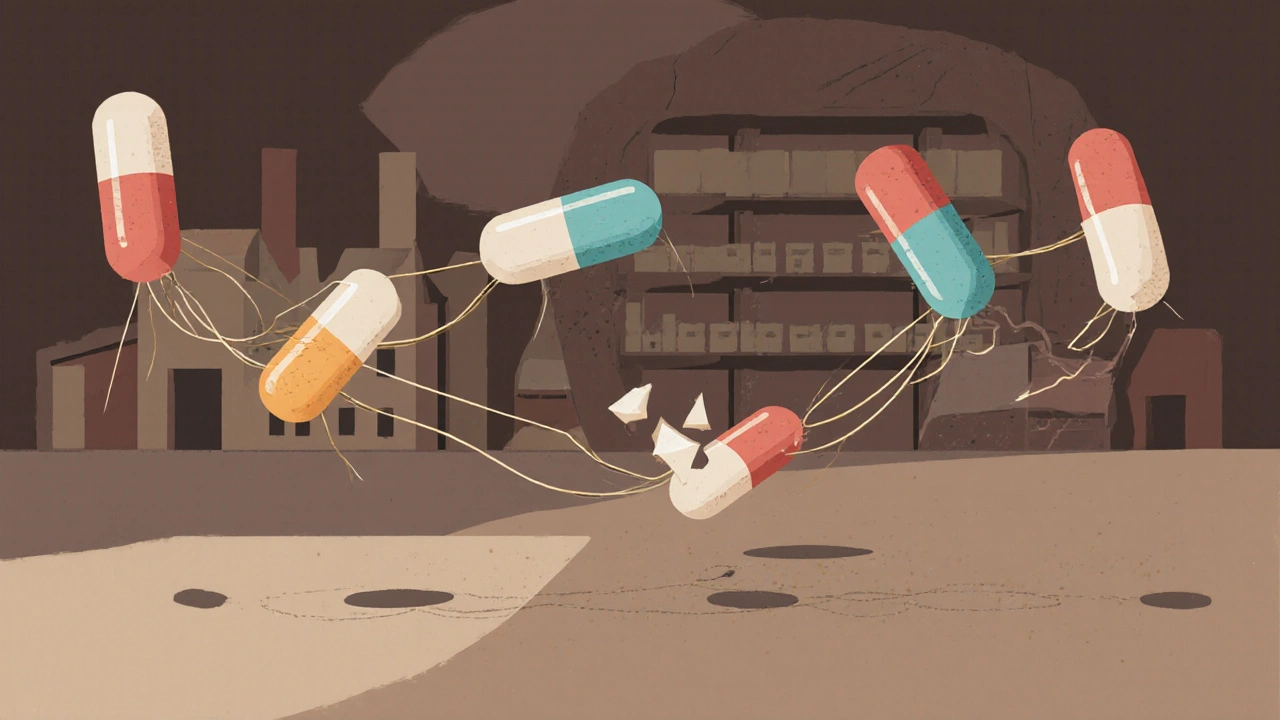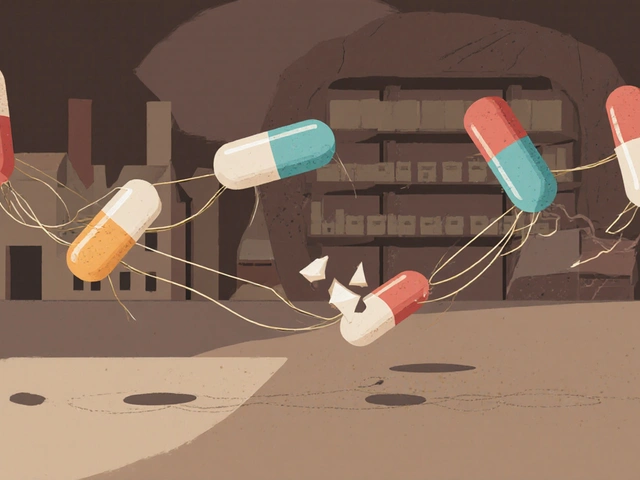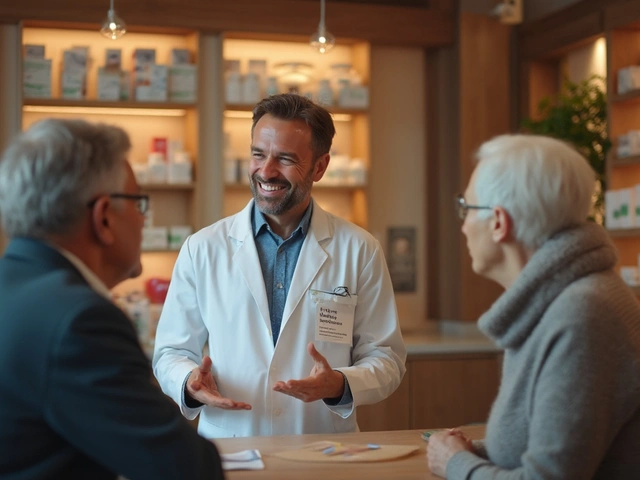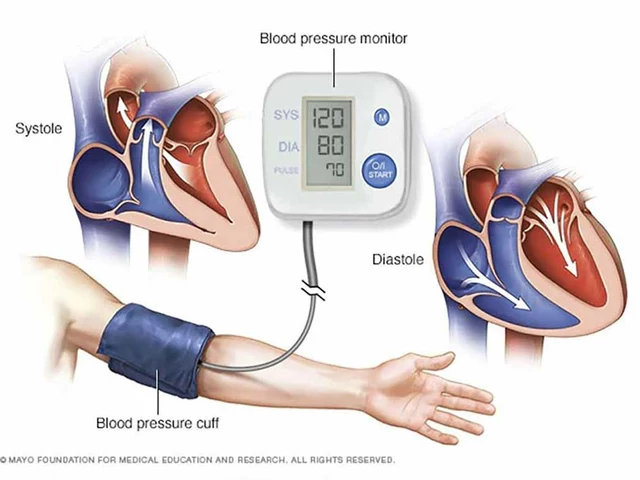When you pick up a generic pill at your pharmacy, you probably don’t think about how it got there. But behind that small tablet is a complex, fragile system under intense pressure. The economics of generic drug distribution aren’t about profit-they’re about survival. With average EBITA margins down to just 8%, every dollar saved in logistics, inventory, and forecasting can mean the difference between staying in business or shutting down. And yet, the more these systems are stripped down to cut costs, the more they break.
The Affordability Paradox in Generic Drugs
Generic drugs are supposed to be cheaper. That’s the whole point. But here’s the catch: when prices drop too low, manufacturers stop making them. Why? Because the profit margin vanishes. In 2023, 73% of drug shortages involved generics priced below $0.10 per tablet. These aren’t rare medications-they’re the ones millions rely on daily: antibiotics, blood pressure pills, insulin. The system is designed to squeeze out cost, but it’s also squeezing out safety.The problem isn’t just price. It’s concentration. Eighty percent of the world’s active pharmaceutical ingredients (APIs) come from just three countries: India, China, and the U.S. One factory shutdown-due to a fire, inspection failure, or natural disaster-can ripple across continents. In 2022, a single plant in India halted production of metformin, a common diabetes drug, causing shortages in over 30 countries. There’s no backup. No redundancy. Just one line running at full speed.
How Efficiency Is Measured-And Why It Matters
Efficiency in generic distribution isn’t about speed. It’s about precision. Top performers track three key metrics: Overall Equipment Effectiveness (OEE), Perfect Order Percentage, and customer order cycle time.OEE measures how well a manufacturing line runs-factoring in downtime, speed losses, and defects. The industry average is 68-72%. The best? Above 85%. That 15-point gap means fewer rejected batches, less waste, and more pills delivered. Perfect Order Percentage multiplies four factors: on-time delivery, complete orders, undamaged goods, and correct documentation. Leading distributors hit 98%+. The average? Just 82%. That’s one in five orders missing something.
And then there’s cycle time-the clock from when a hospital orders 10,000 tablets to when they arrive. Top distributors cut this to under 48 hours. Others take 7-10 days. In a hospital, that delay isn’t just inconvenient. It’s dangerous.
The Two Models: Just-in-Time vs. Just-in-Case
There are two ways to run a generic supply chain: lean or buffered.Just-in-time (JIT) is the favorite of cost-cutters. It means ordering only what you need, when you need it. No extra stock. No warehouse clutter. Sounds smart-until a supplier misses a shipment. Then you’re out of pills. JIT reduces inventory costs by 22-35%, but increases stockout risk by 15-20%. That’s a gamble no hospital can afford.
Just-in-case (JIC) keeps safety stock. Not a lot-just enough. A 15% buffer for critical generics can cut stockouts by 40-60%. That’s what the best distributors do. One manager at Cardinal Health told a LinkedIn thread in June 2023: “We were told to eliminate all buffer stock. We lost three essential antibiotics in six months. We put 15% back. We haven’t had a shortage since.”
It’s not about being wasteful. It’s about being smart. The Efficient Chain Model dominates this space-it’s built for high volume, low variation. It works. But only if you have the data to know when to flex.

Technology Is the Real Game-Changer
The biggest efficiency gains aren’t coming from better trucks or bigger warehouses. They’re coming from software.Cloud-based ERP systems give real-time visibility across the entire chain-from API factory to pharmacy shelf. IoT sensors track temperature and humidity during transport. Forty-five percent of generics require climate control. One degree too hot? The drug degrades. You can’t sell it. You lose money. Sensors alert you before it happens.
AI forecasting is the next leap. Traditional methods use past sales data. That’s useless when demand spikes unexpectedly-like during a flu outbreak or a new FDA warning. Top distributors using AI cut forecast errors by 25-40%. McKesson’s new platform, DemandSignal, reduced errors by 37% in pilot tests. Smaller distributors? Only 15% use AI. The gap is widening.
And then there’s blockchain. It’s expensive-$2.5-4 million for mid-sized players-but it’s becoming mandatory. The FDA’s Drug Supply Chain Security Act (DSCSA) now requires full electronic traceability. Every bottle must be trackable from manufacturer to patient. Compliance adds 5-8% to costs. But non-compliance means you can’t sell.
The Hidden Cost of Bureaucracy
Technology helps. But process kills.One distribution manager on Reddit described a 12-step approval process just to change a supplier quote. “We got a 20% better price from a new vendor. Took six weeks to get approval. By then, the deal was gone. We ended up paying more-and still ran out of stock.”
That’s the silent killer. Too many layers of management. Too many signatures. Too slow. The fastest distributors cut approval chains in half. They empower warehouse managers to make decisions. They let procurement teams negotiate directly with suppliers. They remove bottlenecks before they become shortages.
Who’s Winning-and Who’s Falling Behind
The market is split. Three giants-McKesson, AmerisourceBergen, and Cardinal Health-control 85% of U.S. generic distribution. And they’re pulling away.Cardinal Health invested $150 million in AI and analytics in 2022. Result? A 3.2% market share gain in one year. Their EBITA margin? 9.2%. The average? 8%. The bottom quartile? 6.8%. That 2.4-point gap isn’t just profit. It’s survival.
Smaller distributors can’t match that spend. But they don’t have to. They can focus on niche markets-specialty generics, regional networks, or fast-response logistics. One mid-sized distributor in Ohio cut delivery time to 24 hours for rural clinics by partnering with local pharmacies. They don’t compete on price. They compete on reliability. And they’re growing.
What’s Next? The 2025 Threshold
By 2025, the bar will be higher. Distributors need to hit 85% OEE and 95% perfect order rates-or risk losing market share. The MIT Center for Transportation and Logistics predicts that by 2027, top players will use digital twins of their supply chains-virtual replicas that simulate every possible disruption before it happens. Forecast accuracy? 95%+. Inventory costs? Halved.But here’s the reality: if you’re still using spreadsheets, manual orders, and historical averages, you’re already behind. The market is consolidating. Margins are shrinking. And the FDA isn’t waiting.
Efficiency in generic distribution isn’t optional anymore. It’s the only way to keep life-saving drugs on the shelf.









Ragini Sharma November 23, 2025
so like... india makes most of the pills but we get mad when they shut down? lol. we buy cheap meds, then act shocked when the system breaks? also why is everyone surprised? this is like blaming your phone for dying when you use it 24/7 and never charge it. also typo: metformin was spelled right but i’m still side-eyeing this whole thing. 🤷♀️
Linda Rosie November 24, 2025
The structural fragility of the generic drug supply chain is a systemic failure masked as economic efficiency.
Vivian C Martinez November 24, 2025
You’re so right about the buffer stock. I worked in a rural clinic last year-we went without insulin for three days because someone thought ‘lean’ meant ‘zero.’ We put back a 10% buffer and haven’t had a shortage since. It’s not waste-it’s wisdom. Small changes, big impact.
Ross Ruprecht November 26, 2025
meh. just make more pills. problem solved. why are we overthinking this?
Bryson Carroll November 26, 2025
Let me get this straight-we’re talking about a $0.10 pill and people are crying about ‘safety’? The entire system is a Ponzi scheme built on global exploitation and American entitlement. You want cheap drugs? Fine. But don’t pretend you care about the people making them. The real crisis isn’t the shortage-it’s your moral bankruptcy for expecting perfection at pennies.
Jennifer Shannon November 27, 2025
It’s funny, isn’t it? We live in a world where we can track a single coffee bean from farm to cup-with GPS, blockchain, and artisanal roast notes-but when it comes to a life-saving drug that millions depend on, we’re still using fax machines and hope? The irony is thick enough to spread on toast. We optimize everything except the things that actually matter-like not letting someone die because a warehouse in Gujarat had a power outage. We’re not saving money-we’re gambling with lives, and the house always wins.
Suzan Wanjiru November 27, 2025
AI forecasting is the real MVP here. One distributor I worked with switched from Excel to DemandSignal and went from 45% forecast error to 8%. Also-don’t ignore the human factor. The guy who’s been running the warehouse for 15 years? He knows when the Indian supplier is gonna delay. Let him decide. Not the CFO in New York who’s never seen a pill.
Henrik Stacke November 29, 2025
Oh, the beautiful tragedy of modern logistics. We’ve engineered the world to be leaner, faster, cheaper-and yet, we’ve forgotten that resilience is not a cost. It is a covenant. A promise to the sick, the elderly, the children who depend on a pill that cost less than a cup of coffee. The giants win with AI and digital twins. The rest? They survive on grit, instinct, and the quiet heroism of warehouse clerks who stay late because they know someone’s life is on the line. We don’t need more spreadsheets. We need more humanity.